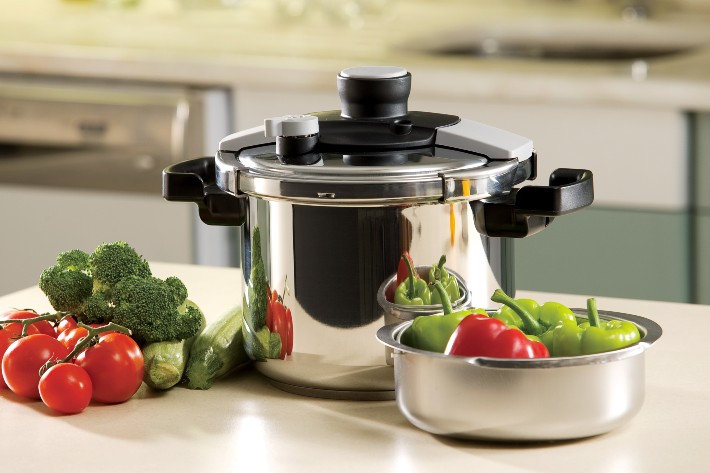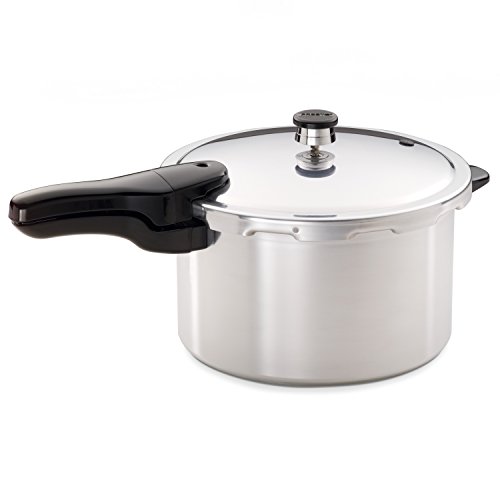
Chef Iq Pressure Cooker
| Pros | Cons |
|---|---|
|
|
Our content is meticulously curated through independent research, testing, reviews, and AI-driven recommendations, all designed to present you with the finest product choices. When you make a purchase through our links, it could result in us earning a commission.

Everyone loves food, but not all of us enjoy the exhaustive cooking process. Enter the pressure cooker, an appliance that can easily cut down on time. Fitted with tight lids with rubber linings and a small sieve-like valve at the top, pressure cookers raise the boiling point of water inside the cooker, converting it into steam that remains trapped inside it. This results in high-pressure levels, and in turn, faster cooking. After testing the best pressure cookers on the market, we can safely say that the CHEF iQ Pressure Cooker is our favorite product on this carefully curated list. Invest in a pressure cooker and read on!
Pressure cookers have always been a hot item in the kitchen world. Many of us grew up around these appliances. In recent years, they've been gaining popularity again. One of the reasons for this may be that busy routines do not allow people to invest long hours in preparing slow-cooking, traditional dishes. Everybody turned to alternatives, and a pressure cooker is one of the most reliable solutions. It allows you to make fancy meals in a short time as well as basic food, such as rice, chicken, and vegetables, within minutes. And for people who cook just out of necessity and have no interest in cooking elaborate meals, it's a lifesaver. Pressure cookers have come a long way from their early incarnations, which were prone to accidents. Modern-day pressure cookers use top-quality materials in manufacturing, and with proper use, they guarantee complete safety.
Size
Pressure cookers are available in various dimensions, but you should always go for the size you need. This depends on the number of people you cook for, as well as the number of times you use it in a week. For a big family, larger-sized pots are available. For a couple, smaller pots take up less counter space. A cooker that's smaller or bigger than your needs will only result in a waste of fuel, time, and energy.
As the name suggests, pressure cookers work based on high pressure in a tightly sealed area. Therefore, it's important to check the maximum pressure your cooker can reach. Most cookers require 15 psi. Pressure cookers with a lesser limit, such as 12 psi or 8 psi, take slightly more time. An adjustable psi is the top option to cook food at your own pace.
The most common materials used in the construction of pressure cookers are stainless steel and aluminum. The former is always preferred over the latter. Not only is aluminum soft and deformable, but it is also reactive, which may be harmful in some cases. A triple-ply, with aluminum sandwiched in between steel, mighy be a better option.
Pressure cookers aren’t exactly cheap. The simplest ones are a hit on your wallet. With the increasing number of features, the cost keeps on increasing. They offer uncountable benefits, the biggest of which is time-saving. They retain more than 50% more nutrients in food than normal pots and are an investment, which is why it is important to check their warranty. The standard warranty is 12 years, but most companies only cover the pot under this. Always select a pressure cooker with a warranty for the pot and its associated parts.
Handles are one of the most important aspects of any cooking pot. The same is the case with pressure cookers. Make sure there is a top and two side handles. They’re meant to hold the overheated pot easily and grant stability and sturdiness in the hold. Foldable handles are attractive and space-efficient but not as durable. Strong handles are preferable.
Electric pressure cookers have numerous striking features, the most prominent of which is that they do not require manual cooking timing. This results in its ability to cook food with a high level of versatility. They can steam, simmer, and even sauté for you. They heat up and down automatically, and other than the initial instructional click, they don’t require any supervision. They are a little expensive, but their specifications make up for it.

| Pros | Cons |
|---|---|
|
|

| Pros | Cons |
|---|---|
|
|

| Pros | Cons |
|---|---|
|
|

| Pros | Cons |
|---|---|
|
|

| Pros | Cons |
|---|---|
|
|

| Pros | Cons |
|---|---|
|
|